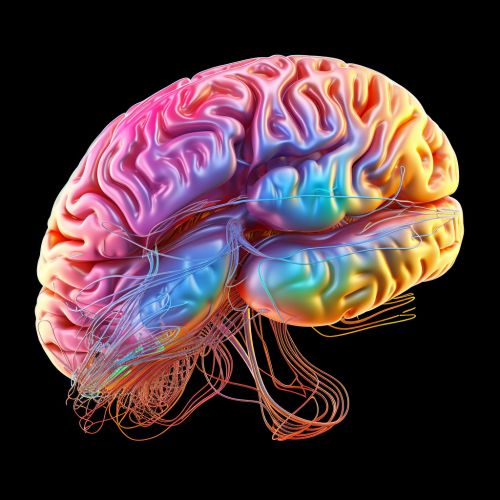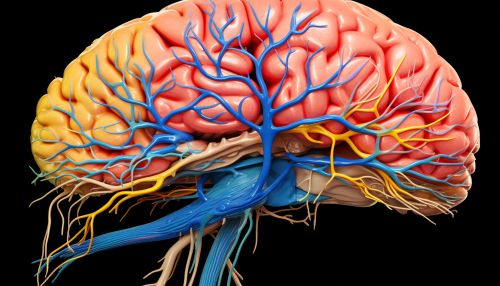Cognitive Neuroscience of Spatial Cognition and Memory
Introduction
Cognitive neuroscience is a branch of neuroscience that studies the biological processes that underpin cognitive functions. The focus of this article is on the cognitive neuroscience of spatial cognition and memory, which involves the study of how the brain processes spatial information and how this information is stored and retrieved. This field has significant implications for our understanding of how we navigate our environment, remember locations, and perform tasks that require spatial reasoning.


Spatial Cognition
Spatial cognition refers to the mental processes that enable individuals to understand and interact with the spatial aspects of their environment. This includes the ability to perceive, remember, and manipulate spatial information. Spatial cognition is a complex cognitive function that involves multiple brain regions and cognitive processes.
Spatial Perception
Spatial perception is the ability to perceive the spatial relationships between objects in one's environment. This involves the processing of visual and other sensory information to determine the position and orientation of objects relative to oneself and to each other. The primary brain region involved in spatial perception is the parietal lobe, particularly the right hemisphere, which is responsible for processing spatial and visual information.
Spatial Memory
Spatial memory is the cognitive process that enables individuals to remember and recall spatial information, such as the location of objects, the layout of an environment, or the route to a destination. The hippocampus is a key brain region involved in spatial memory. It is particularly important for the formation of cognitive maps, which are mental representations of the spatial layout of an environment.
Spatial Reasoning
Spatial reasoning, also known as spatial intelligence or visuospatial reasoning, is the ability to visualize and manipulate spatial information in one's mind. This includes tasks such as mental rotation, spatial visualization, and spatial problem-solving. The parietal lobe, particularly the right hemisphere, is heavily involved in spatial reasoning.
Neural Mechanisms of Spatial Cognition
The neural mechanisms of spatial cognition involve a complex network of brain regions and cognitive processes. The primary brain regions involved in spatial cognition include the parietal lobe, the hippocampus, and the prefrontal cortex.
Parietal Lobe
The parietal lobe, particularly the right hemisphere, is heavily involved in spatial cognition. It is responsible for processing spatial and visual information and is involved in tasks such as spatial perception and spatial reasoning. The parietal lobe is also involved in the integration of sensory information from various modalities, which is crucial for spatial cognition.
Hippocampus
The hippocampus is a key brain region involved in spatial memory. It is particularly important for the formation of cognitive maps, which are mental representations of the spatial layout of an environment. The hippocampus is also involved in the encoding, storage, and retrieval of spatial information.
Prefrontal Cortex
The prefrontal cortex is involved in the executive control of spatial cognition. This includes the planning and execution of spatial tasks, the monitoring of spatial performance, and the regulation of spatial attention. The prefrontal cortex is also involved in the integration of spatial information with other cognitive processes, such as memory and attention.
Cognitive Neuroscience of Spatial Memory
Spatial memory is a key aspect of spatial cognition and is crucial for our ability to navigate our environment and remember locations. The cognitive neuroscience of spatial memory involves the study of the neural mechanisms that underpin the encoding, storage, and retrieval of spatial information.
Encoding of Spatial Information
The encoding of spatial information involves the processing and representation of spatial information in the brain. This process is primarily mediated by the hippocampus, which forms cognitive maps of the spatial layout of an environment. The parietal lobe is also involved in the encoding of spatial information, particularly in the processing of visual and spatial information.
Storage of Spatial Information
The storage of spatial information involves the consolidation and maintenance of spatial memories. This process is primarily mediated by the hippocampus, which is involved in the long-term storage of spatial information. The prefrontal cortex is also involved in the storage of spatial information, particularly in the maintenance of working memory for spatial information.
Retrieval of Spatial Information
The retrieval of spatial information involves the recall of spatial memories. This process is primarily mediated by the hippocampus, which is involved in the retrieval of long-term spatial memories. The prefrontal cortex is also involved in the retrieval of spatial information, particularly in the recall of working memory for spatial information.
Conclusion
The cognitive neuroscience of spatial cognition and memory is a complex and fascinating field that has significant implications for our understanding of how we perceive, remember, and interact with our spatial environment. This field involves the study of the neural mechanisms that underpin spatial cognition and memory, including the roles of the parietal lobe, the hippocampus, and the prefrontal cortex. Despite the progress that has been made in this field, there is still much to learn about the intricate neural mechanisms of spatial cognition and memory.
